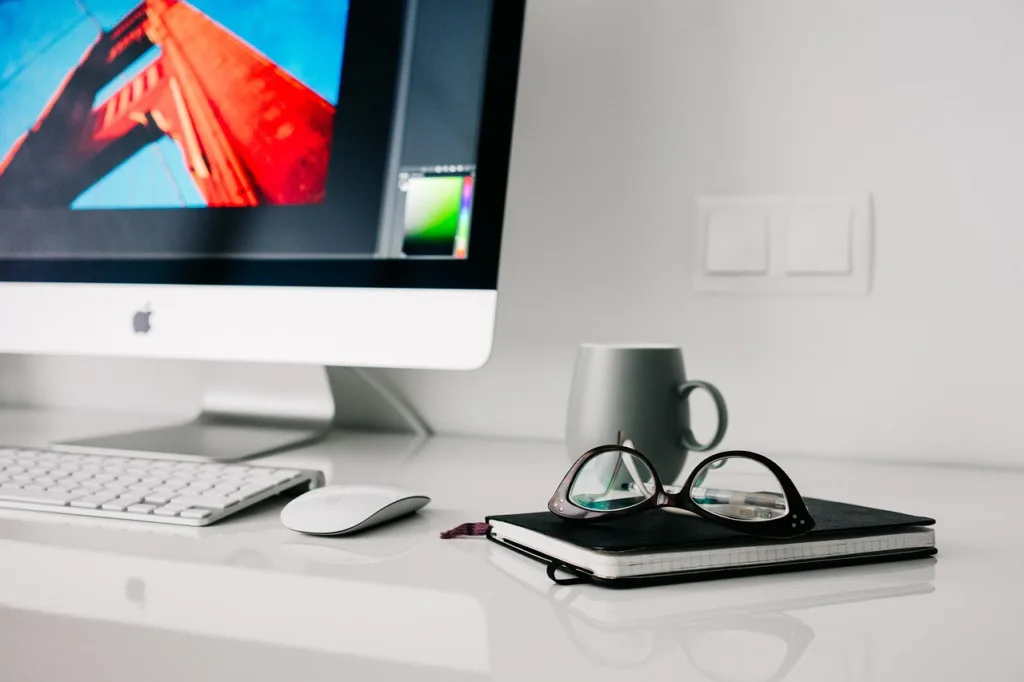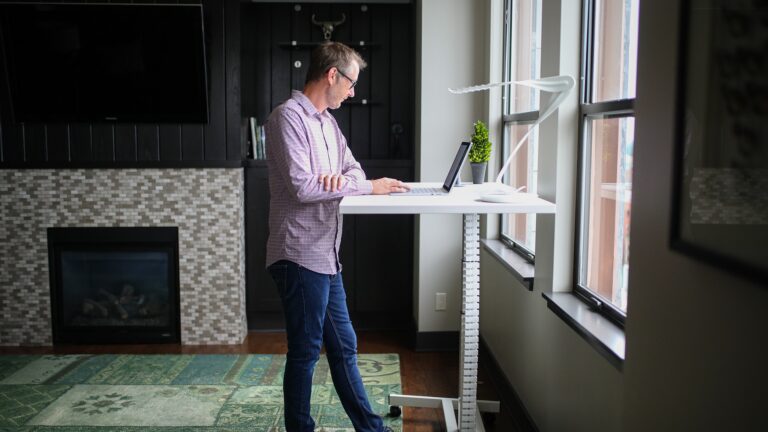In 2024, many workers around the world still prefer the flexibility of hybrid work and working remotely. According to a 2023 Owl Labs study on hybrid work, 79% of managers believe their teams are more productive when they work in either a hybrid or remote environment.
Working from home has become a popular option for many workers, as it gives them more comfort and flexibility over how they structure their day. But it can have its own set of challenges. Staying productive as a remote worker in a home environment can be tricky. Distractions are everywhere, and maintaining a good work-life balance requires effort, as the barriers between a home environment and office environment become blurred. In this blog, we’ll look at ways to boost work-from-home productivity, so you can achieve your work goals with ease.
Statistics on work from home productivity
According to a 2023 Owl Labs study, one of the key factors driving work from home success is proper training, with 63% of respondents stating that their employers have invested in training to help teams thrive in hybrid and remote work environments. However, there is a gender gap when it comes to the view that workers should return to the office for productivity. 80% of men believe coming back to the workplace is essential, compared to just 47% of women.
A Microsoft Work Trend Index Special Report claims that 87% of hybrid workers believe that they’re productive at work. Contrastingly, only 12% of team leaders have full confidence that their hybrid team is productive, and 85% of managers claim that hybrid work has made it challenging to have confidence in workers’ productivity levels.
Let’s get into the best tips to make you more productive when working from home.
1. Establish a family routine to avoid distractions
One of the biggest challenges in maintaining work from home productivity is managing household distractions, particularly when children are home during the workday. If you share your home with others, you’ll likely have building noise from TVs, music and other conversations. Then there are children, pets or family members walking into your video calls.
When you work from home as a parent, balancing work responsibilities with childcare can be overwhelming. The solution is to establish clear boundaries and a structured schedule with your family. For example, if both you and your partner work from home, consider having alternating work shifts so that one of you is always available for your children. Have one person working in the morning, while the other handles childcare, then swap later in the day so the other person can work in the afternoon.
Another option is to start your day earlier than the rest of the household. If you’re an early bird, waking up an hour or two before everyone else can give you a heads start on household tasks and getting the kids ready for school. This can also help you to improve your work from home productivity while the house is quiet. If you are starting your working hours very early however, make sure these are approved with your manager so you are being paid for your time.
Set expectations with other family members so they know that when you work from home, you are not to be disturbed. Try to have a separate space like a bedroom or office where you can work uninterrupted, and can close the door on household noise.
2. Set up a dedicated workspace
Probably the best work from home productivity tip is to have your own workspace. This can prevent lines from becoming blurred when it comes to separating work and family life. While it may be tempting to sleep in and work from your bed, this can really impact your mental health and work-life balance. This is because not having a dedicated work area makes it harder to stay focused.
Set up a specific area in your home that’s dedicated solely to work and nothing else. This area should include good lighting, a desk, and ergonomic furniture to support your back, neck, head and wrists. You don’t have to have a separate room for your home office – a corner of your dining or living room will do. Or a quiet nook on a landing or in a conservatory can work really well.

Ideally, your workspace should have a door to block out distractions, and it should be stocked with everything you need, including a computer, printer, headphones, and room for writing. This setup will not only help improve your work from home productivity, but also create a psychological boundary between work and relaxation. At the end of the day, physically walking away from your work area finishes your day and brings you out of ‘work mode’.
3. Use productivity tools
If you work as part of a remote or hybrid team, productivity and collaboration tools can be really helpful to keep you on track. Whether you’re managing multiple projects, tracking time on a project, or working with your wider team, the right remote working tools can help you stay organised and focused. You may want to consider using platforms like Trello, ClickUp or Asana, which enable remote teams to track the progress of projects and the various status of tasks. This can help you to stay organised and focused during the day.
4. Dress smartly for motivation
While working from home can bring the temptation to stay in your pyjamas or joggers all day long, it’s best to dress as if you’re going to the office. Dressing properly for work can have a surprisingly positive impact on your productivity. Putting on work attire can put your brain into ‘work mode’, reminding it that it’s time to focus and be productive during the day. Keep the loungewear for your weekends!
5. Avoid lie-ins
A common temptation when working from home is to sleep in because you no longer have a commute, but this can really impact your productivity levels. To make the most of your time working from home, start your day as if you were travelling to an office. Get up early and prioritise your most important tasks. If you lie in, you risk not getting your jobs done effectively.
If you have kids or other household chores to do, set your alarm for an hour before your household wakes up, so you can get those tasks done before starting work. Having quiet, uninterrupted morning hours can make you feel more productive and can keep your mind feeling fresher for longer. It also sets a productive benchmark for the rest of the day.
6. Take breaks to recharge
To maintain consistent work from home productivity, it’s important to take regular breaks. This can be anything from going downstairs to make a coffee, to having a walk around your local area. While it may seem counter-intuitive, stepping away from your work can actually boost your focus and make you more creative when you return. Taking breaks is also important to prevent muscular injuries or eye strain that comes from blue light screens.
Aim to take a short break of 10 minutes every hour to stand up, stretch, or hydrate. Longer breaks are also important, so make sure to give yourself a proper lunch hour during your working day. Use this time to take yourself away from work. Don’t eat lunch at your desk – eat it away from your workspace and engage with your family, take a walk, or play with your pet. These mental resets can help you avoid burnout and keep your productivity levels high.
Remember that being a productive person doesn’t mean that you have to work all day without breaks. It’s about working more tactically and allowing your brain time to recharge.
7. Remove digital distractions
Digital devices like mobile phones are one of the biggest threats to productivity levels when working from home. The temptation to procrastinate and scroll through social media, watch TV or clips on YouTube is always there. While this temptation is in the office too, the temptation at home is even greater. To keep your mind focused and away from digital distractions, keep your mobile phone that’s for personal use off of your desk. Log out of all your social media accounts during work hours, disable notifications, and put your phone in another room. If you need a work phone, request one from your employer so you can keep work and play separate.
If you’re prone to browsing the internet during work hours, consider using browser extensions that block access to distracting sites. This will improve your focus levels and ensure your work from home productivity remains intact.
8. Check your emails at certain times
If you continuously monitor your emails for new messages, this can affect how much work you actually achieve in a day. Constantly checking your email can disrupt your focus. Instead of keeping your inbox open all day, designate specific times to check and respond to emails. For example, you could check your inbox in the morning, after lunch, and at the end of the day.
Putting your email responses into specific time slots like this allows you to concentrate on your tasks without interruptions, ensuring that you stay productive when working from home.
9. Stick to your to-do list
Maximising your productivity is all about making a to-do list and sticking to it. So do just that when working remotely. Write a list of realistic tasks you want to accomplish for your day, and tick each one off as you go. Do this every day. At the end of each workday, write down a list of tasks for the next day. Put the most important ones at the top, and set realistic deadlines for each.
A clear, structured plan will help you stay on track and hold yourself accountable for any tasks you didn’t complete in time. Having a to-do list also reduces decision fatigue, and allows you to quickly jump from one task to the next, without wasting time figuring out what to do next.
10. Multitask where and when you can
It’s still debatable whether a person can actually complete two tasks at the same time, but working from home does enable workers to multitask and achieve more in a day than they would in an office. Working from home often means juggling personal responsibilities alongside professional ones. To manage both effectively, find opportunities to multitask where possible.
For instance, while waiting for a meeting to start, you can put on a load of washing, load the dishwasher, feed the cat, or do admin. This can help you stay on top of household chores and give your brain a rest so you feel more productive.
A Microsoft Work Trend Index Special Report claims that 42% of remote workers multitask in this way during meetings. Adopting this approach is especially helpful if you’re in a meeting that isn’t directly relevant to your role, and that you don’t need to specifically contribute to
11. Eat healthily during your workday
If you work at home, it can be more tempting to reach for the biscuit jar. Make sure you nourish your body to keep your mind sharp. This means staying hydrated with plenty of water, avoiding sugary drinks, and eating meals that contain plenty of lean protein, healthy carbohydrates, fruits and vegetables.
To save time, it’s a good idea to batch-cook healthy meals at the weekend and portion them out for the week. This way, when you have your lunch hour, you can tuck into a healthy meal quickly and easily, without relying on snacks and junk food.
The takeaway
Working from home in a hybrid or fully remote role offers flexibility and the opportunity for a better work-life balance, but it also requires discipline. By following these tips when working from home, you can improve your productivity levels and get the most out of being a remote worker. By preventing distractions and noise, setting healthy boundaries, and making a few lifestyle adjustments, you’ll find that you can achieve great work and thrive in your role.





